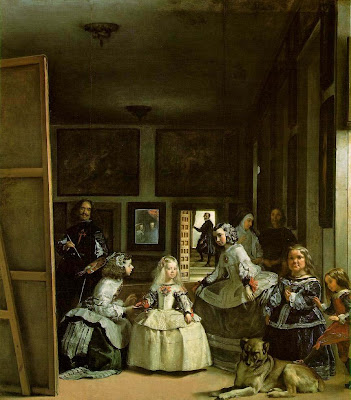This is what I found out about Great Pyramid of Giza, Qin Shi Huang Mausoleum, and the Great Ziggurat at Ur.
 |
| Retrieved June 12, 2011 from : http://good-wallpapers.com/pictures/4418/Great_Sphinx,%20Chephren%20Pyramid,%20Giza,%20Egypt.jpg |
The most famous pyramids are the Egyptian pyramids — huge structures built of brick or stone, some of which are among the world's largest constructions. The Great Pyramid of Giza is the largest in Egypt and one of the largest in the world.
The Great Pyramid of Giza is one of the Seven Wonders of the Ancient World. It is the only one to survive into modern times. The Ancient Egyptians covered the faces of pyramids with polished white limestone, containing great quantities of fossilized seashells.
The pyramid has three burial chambers. The first is underground, carved into bedrock. The second, above-ground chamber was called the queen's chamber by early explorers. The third is the king's chamber, which held a red granite sarcophagus placed almost exactly at the center of the pyramid.
Retrieved June 12, 2011 from : http://en.wikipedia.org/wiki/Pyramid
I wonder how the people last time have the idea of making pyramid in triangle shape.
The structure inside the pyramid also make me curious.
However,
do I have the chance to see and even touch the pyramid?
________________________________________________________
 |
| Retrieved June 12, 2011 from : http://i.images.cdn.fotopedia.com/flickr-12138066-original/World_Heritage_Sites/Asia/East_Asia/China/Mausoleum_of_the_First_Qin_Emperor_Terracotta_Army/Terracotta_Army-original-14.jpg |
The mausoleum of Qin Shi Huang is the largest preserved one in China. It is a unique architectural ensemble whose layout echoes the urban plan of the capital, Xianyang, with the Imperial Palace enclosed by the walls of the city, themselves encircled by other walls. The mausoleum is also associated with an event of universal significance: the first unification of the Chinese territory in a centralized state created by an absolute monarch, in 221 BC.
The first Emperor of China, Qin Shi Huang (Ying Zheng: 221-210 BC) arranged for his burial place long before his accession to the seat of supreme power. When he became king of Qin in 247 BC, Zheng had his geomancers choose a favourable site at the foot of Mount Li. Work was commenced and was carried out more energetically with each new political and military success over his rivals Han, Zhao, Wei, Chu, Yan and Qi. Following the proclamation of the Empire of Ten Thousand Generations in 221, work at the burial place took on extraordinary dimensions.
According to current estimates, the statue army of the Qin Shi Huang Mausoleum must have represented the exact number of the imperial guards. Over the past thirteen years, discoveries have revealed the dimensions of the mausoleum, and the site constitutes one of the most fabulous archaeological reserves in the world.
Because of their exceptional technical and artistic qualities, the terracotta warriors and horses and the funerary carts in bronze are major works in the history of Chinese sculpture prior to the reign of the Han dynasty. The army of statues also bears unique testimony to the military organization in China at the time of the Warring Kingdoms (475-221 BC) and that of the short-lived Empire of a Thousand Generations (221-210 BC).
Retrieved June 12, 2011 from : http://whc.unesco.org/en/list/441
Mausoleum is a great sculpture in China.
Although I have been knowing about "mausoleum",
but I never go into any research about it.
I did not even ask anything about it when I knew about the existence of mausoleum.
Even though now I have did some research on it,
I still not really understand the concept of mausoleum.
Maybe I should read the history of mausoleum in Chinese version since this sculpture is from China.
____________________________________________________
 |
| Retrieved June 12, 2011 from : http://userdisk.webry.biglobe.ne.jp/022/913/74/N000/000/000/130518993599816419033_Ancient_ziggurat_at_Ali_Air_Base_Iraq_2005.jpg |
The
Ziggurat at Ur,
a massive stepped pyramid about 210 by 150 feet in size, is the most well-preserved monument from the remote age of the Sumerians. It consists of a series of successively smaller platforms which rose to a height of about 64 feet, and was constructed with a solid core of mud-brick covered by a thick skin of burnt-brick to protect it from the elements. Its corners are oriented to the compass points, and like the Parthenon, its walls slope slightly inwards, giving an impression of solidity.
The ziggurat was part of a temple complex that served as an administrative center for the city, and it was also thought to be the place on earth where the moon god Nanna, the patron deity of Ur, had chosen to dwell. Nanna was depicted as a wise and unfathomable old man with a flowing beard and four horns, and a single small shrine—
the bedchamber of the god—was placed upon the ziggurat's summit. This was occupied each night by only one woman, chosen by the priests from among all the women of the city to be the god's companion. A kitchen, likely used to prepare food for the god, was located at the base of one of the ziggurat's side stairways.
Retrieved June 12, 2011 from : http://www.amazeingart.com/seven-wonders/ziggurat.html
Seriously,
I do not know anything about ziggurat.
Am I really an Art student?
:(
__________________________________________________

















































